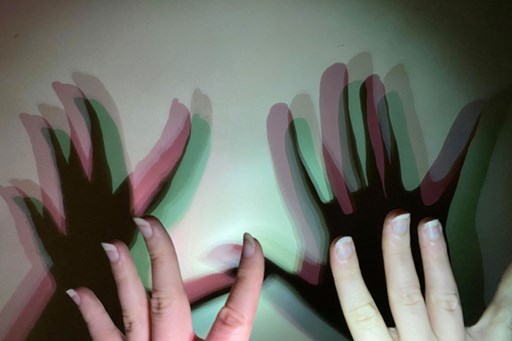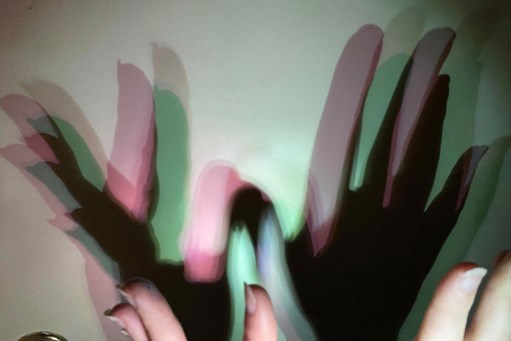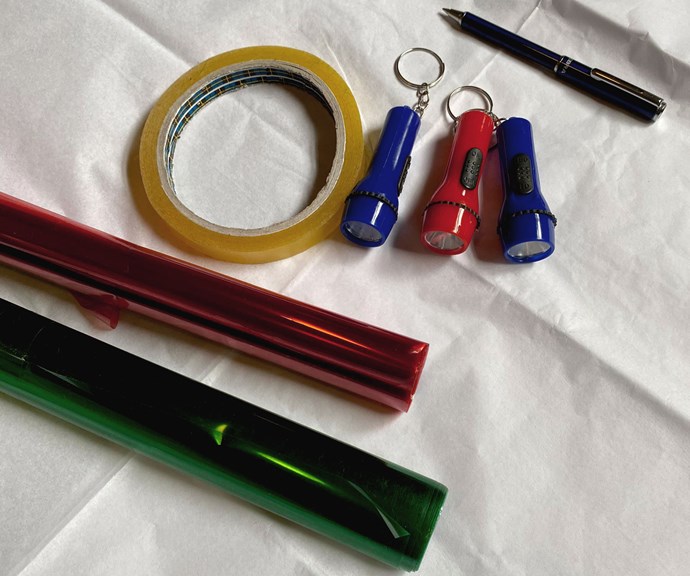Play with coloured shadows
Have you ever wished your shadow was colourful? You can use a few simple items to play with light and create a spectacular shadow wall while learning about how we see colour!
Materials
- 3 torches (torches on your phone or tablet work too)
- Cellophane in red, blue and green
- Tape, rubber bands or blutack
- A white surface, such as a wall or a piece of white paper you can blutack to your wall.
- a pencil or pen
Method
- Cut a piece of each colour of cellophane big enough to fit over the end of each torch with enough extra to help secure it.
- Secure a piece over each with your rubber bands, blutack or tape so you have a torch that shine red, one that shines blue and one that shines green.
- Put the green torch between the red and blue torches and arrange them in a row an equal distance from the white wall or surface. A table or an extra pair of hands are useful here.
- Make the room as dark as possible. Then turn on the three coloured torches, adjust the positions of the bulbs until you obtain the “whitest” light you can make on the wall or cardboard.
- Hold the pencil or pen close to the wall. Move it closer to the torches until you see three different coloured shadows on your wall.
- What happens if you turn off one torch? Is the wall still white? Do the coloured shadows remain the same?
- Try again with a different torch turned off.
- Test out the result with a different object such as your hand. What about an object with holes in it or a magnifying glass? What can you notice?
What’s going on?
White light is a mixture of all the colours of the light spectrum. Our eyes contain light receptors called rods and cones. Rods are used for night vision and cones let you see in colour. One type of cone is the most sensitive to long wavelengths or colours at the red end of the spectrum, one best detects short wavelengths at the blue end of the spectrum and the third is in the middle. With just these three types of cones, we are able to perceive more than a million different colours.
In our experiment the wall looks white because these three coloured lights stimulate all three types of cones in your eyes approximately equally, creating the sensation of white. With these three lights you can make shadows of seven different colours—blue, red, green, black, cyan, magenta, and yellow—by blocking or turning off different combinations of lights. Each torch is shining from a different angle so some light can still reach the wall, creating coloured shadows. When you block two lights, you see a shadow of the third colour.
Our Scienceworks challenge to you
If you want to experiment further, find out what happens when you use different colours of paper for the screen such as yellow or purple. What happens when you hold up a glass or other clear object?


